TOC
Guide To: How to start Intermittent Fasting and what are the benefits?!
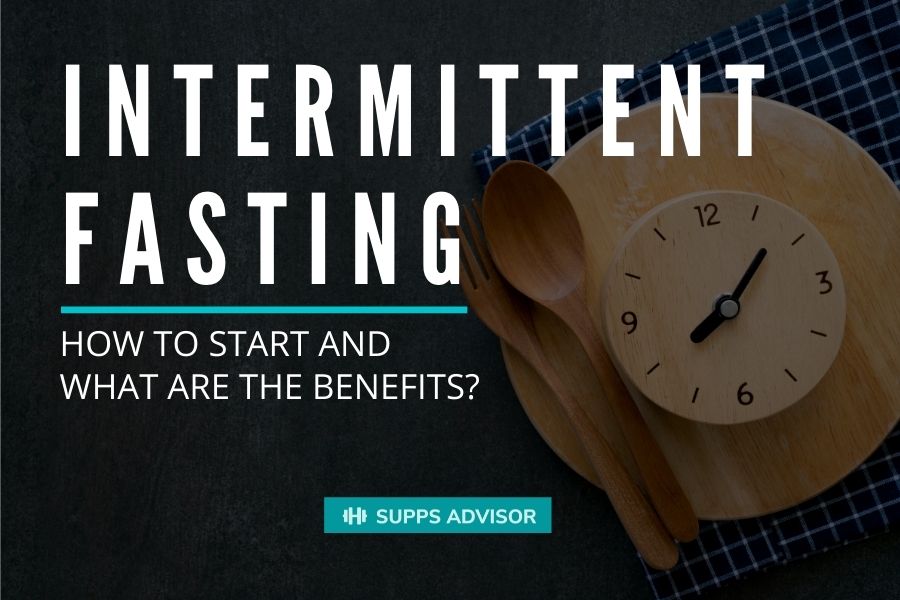
02/06/2020 · 15 min reading
One early morning, a fellow personal trainer and I were discussing nutrition. Suddenly, I realized that I had no idea what nutrition plan she uses. She replied with, “Intermittent Fasting.”
I hadn’t heard about it yet, so I asked her some questions. She explained everything to me and how effective it has been for her. Ever since that day, I have used this diet method and recommended it to many clients. So here is the complete guide to fasting!

What Is Intermittent Fasting and Why Should You Try It?
This method 9 consists of cycling between fasting and eating. The time range of fasting can vary from a few hours per day to a couple of days at a time. One example is the word breakfast. When you sleep, you are fasting by going several hours without eating. When you wake up and eat breakfast, you are breaking your fasting; hence the term “breakfast.”
We fast every day in our lives, but for most people, the term “fasting” makes them think of starvation. Starvation is not having the option to eat or having no food available. In contrast, fasting is a choice with food available.
Most people use fasting to lose weight without losing muscle mass. Additionally, during the times where you can eat, you eat larger meals. You consume around the same amount of calories rather than drastically cutting calories. For this reason, many people find this easier to follow. This method requires fewer behavioral changes that often trip-up dieters.

How Does It Work?
During intermittent fasting, your body will enter 2 separate states 2. These stages are the fed state and the fasting state.
During the fed state, it spends several hours digesting your food. During this time, insulin levels rise, making it difficult to shed extra pounds. Insulin stores glucose (blood sugar) in your liver, which your body usually uses for fuel. Your liver turns extra glucose into fat for energy storage.
Your body is in the fasting state at 12 or more hours since your last meal. At this point, your insulin levels are low. After going so long without food, your body begins to burn stored energy from fat.
This process is how you burn fat without losing muscle mass or other necessary weight.

Benefits
Fasting offers a wide variety of benefits for your health. Although research is only beginning, positive results are already surfacing. Before we get into the complete guide to fasting, let’s explore these benefits.
Weight Loss
As I mentioned before, fasting is an excellent choice for weight loss. Rather than losing weight that you prefer to keep, your body will focus specifically on body fat.
Many people find that it is easier to gain muscle mass 2 through this method as well. You can also pair fasting with a diet that promotes muscle growth. Adding in strength training pushes your muscle-building even further. This is especially helpful for athletes looking to bulk up.
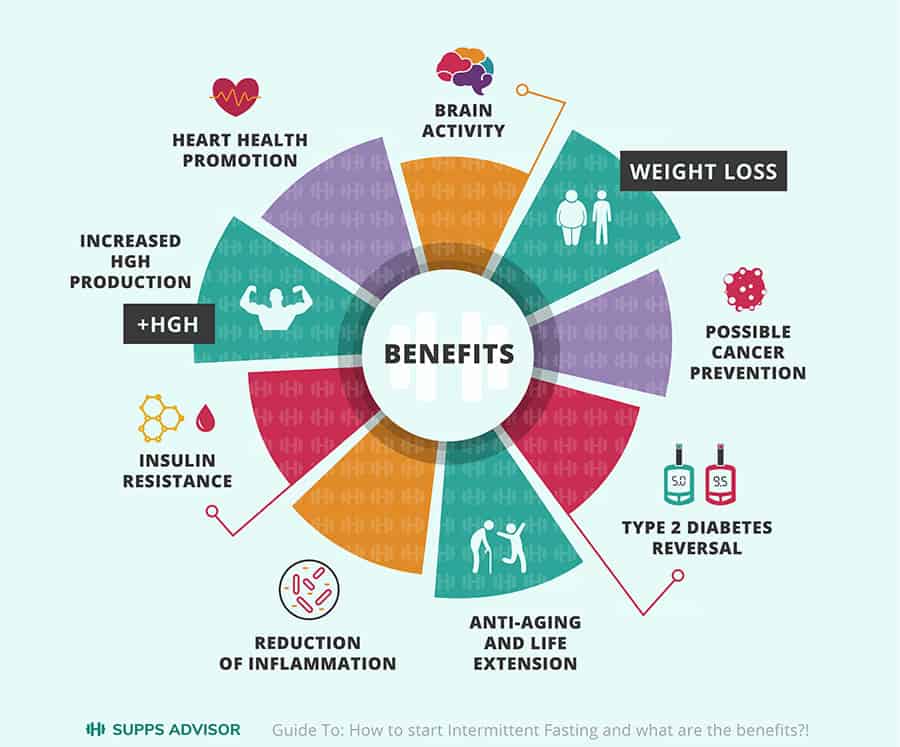
For athletes, the stage of cutting also becomes easier. Cutting 15 is the process of shedding excess pounds while maintaining muscle mass. Many athletes dislike this stage due to how difficult it can be. With fasting, cutting causes less stress for your body.
In most cases, cutting and bulking are separate stages. Fasting can help you combine these 2 stages into 1 simple process.
If you plan on changing your diet for better results, fasting is complimentary. Reducing the number of meals you eat lowers the chances of breaking your diet. You will be less tempted to overeat since you are consuming plenty during your eating hours.
This method is also easier to stick to for most people for many reasons. Here are some examples of these reasons:
- You don’t have to meet significant calorie restrictions.
- You don’t need to leave out certain foods. Going to a restaurant during your eating hours won’t be problematic. There’s no need to watch your friends in misery while they enjoy tempting food. Eating healthy foods is still recommended, but doesn’t have to be as strict or limited.
- Fasting doesn’t need as much planning, cooking, or maintenance. There is no need for meal planning unless you prefer to.
- Crash diets that have crazy restrictions for a short period of time aren’t needed. These diets are not only difficult, but the lost weight comes back afterward.
- You achieve ketosis 11 without a strict Keto diet. The Keto diet aims to achieve ketosis to burn fat instead of glucose. Fasting puts your body in ketosis without limiting your calories or foods. Pairing Keto with fasting can boost your ability to reach ketosis.
Insulin Resistance
Insulin resistance 5 occurs when your body doesn’t respond to insulin. This resistance increases blood sugar. Insulin resistance is one of the lead factors that cause type 2 diabetes.
Fasting intermittently can lower insulin resistance 9. Lower blood sugar and insulin levels work toward preventing type 2 diabetes.
Type 2 Diabetes Reversal
Due to the lowered blood sugar and insulin levels, there is a potential for diabetes reversal. Small studies 1 have shown type 2 diabetes reversal due to fasting intermittently. Lowering your blood sugar can lead to a reduced A1C level, putting you in the safe A1C range.
Your doctor should track your fasting when you have type 2 diabetes.
Reduction of Inflammation
Monocytes are blood cells that cause inflammation in your body. Inflammation can lead to diseases such as inflammatory bowel disease and sclerosis.
Studies 10 showed decreased levels of these inflammatory blood cells due to fasting.
Heart Health Promotion
Several risk factors lead to heart disease, including:
- High levels of LDL (bad cholesterol)
- Inflammation
- Insulin resistance
Fasting promotes heart health through the possibility of decreasing these risk factors. Adding a cardio workout to your regimen further supports your heart health. Consuming heart-healthy foods is another complementary practice.
Increased Human Growth Hormone (HGH) Production
During fasting, your body produces more HGH 13. This hormone supports the development of lean muscle. Additionally, when HGH produces while fasting, your body starts breaking down fat.
Another form of fasting can produce up to 1,500% more HGH. This method is one meal a day, or OMAD 3.
Possible Cancer Prevention
Studies 6 show that fasting lowers the risk of cells developing into cancer cells. Additionally, the chances of cancers related to inflammation or insulin resistance decrease. Clinical studies show that fasting may have a positive impact on cancer treatment.

Anti-Aging and Life Extension
Fasting reduces disease risk factors, inflammation, and progression of type 2 diabetes. This health improvement increases your lifespan. On top of those benefits, fasting impacts your aging and lifespan 4 in other ways.
For instance, fasting improves cell health. Your cell growth becomes balanced, and their performance improves. A specific function of the cells can make a difference in aging. This function is the process of removing old cellular junk. This cellular junk decreases cell performance. When this process improves, new cells replace old ones, which slows aging.
Antioxidants defend our cells from damage. When we age, our antioxidants decrease, which puts our cells at risk. Fasting supports better antioxidant defenses and balances out the cell damage.
These benefits increase our lifespan and improve our health and quality of life.
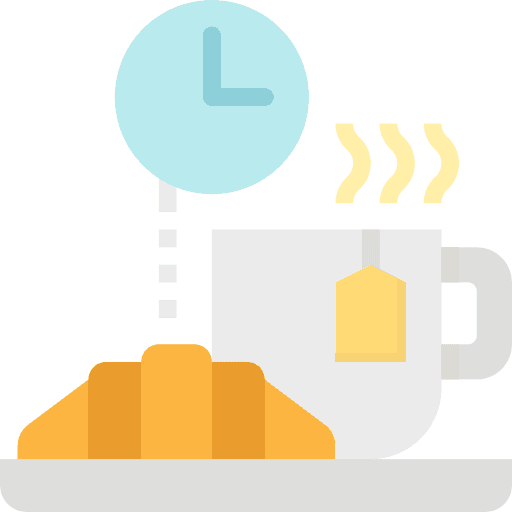
Different Methods
There are several methods of fasting that work for different schedules. In this section, we explore the various techniques and how they work. From there, you can choose which way you feel would fit you the best.
Some models are daily. Daily methods require you to consume no calories during your fasting hours. Although no food is allowed, you may consume drinks that contain no calories. Other models include a day or more of continued fasting that occurs over a period of time.
16:8
This method is often referred to as the Leangains method 2. This plan consists of 16 hours of fasting, followed by an 8 hour eating period. It doesn’t matter what time you schedule for your fasting and eating. For instance, you can start eating at 9 AM and end at 5 PM. Likewise, you can start eating at noon and end at 8 PM.
This method is an example of a daily model. These models are ideal for most people due to the routine. Daily models create a habit that becomes easy for you to follow.
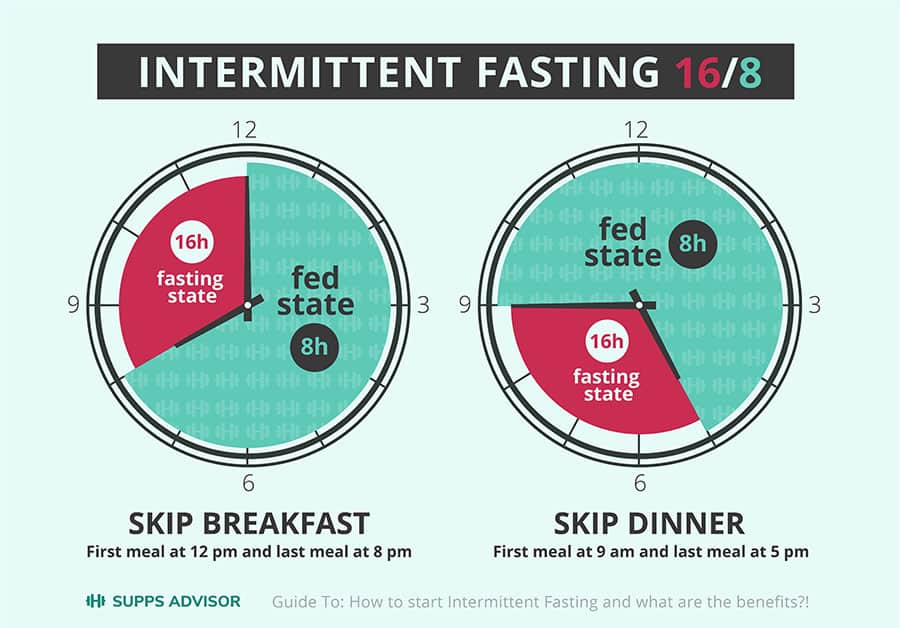
20:4
The 20:4 model is also called the Warrior Diet. The Warrior Diet is the most intense model and can be uncomfortable for many people. This model consists of 20 hours of fasting. This only allows you 4 hours to eat your daily amount of calories. Eating so much in a small timeframe can cause stomach discomfort.
Again, the hours scheduled for eating and fasting are your choice.
5:2 Fasts
The 5:2 method 9 of fasting alternates days of the week. You choose 2 non-consecutive days in a week to only consume 500-600 calories. For the rest of the week, you only eat the number of calories that you burn per day. This alternate day fasting creates a calorie deficit that aids weight loss efforts. Many people also choose this method to lower bad cholesterol and blood sugar levels.
This fast can involve the one meal a day (OMAD) method that I mentioned before.
24-Hour Fasts
Referred to as “Eat Stop Eat” 7, this method is similar to 5:2. While 5:2 allows 500-600 calories during fasting days, Eat Stop Eat allows no calories at all for 24 hours. This fast is also done on 2 non-consecutive days per week.
If you lack experience in fasting, this method can be tough. Going 24 hours without eating causes intense hunger that you may prefer to avoid.
36-Hour Fasts
This fast requires you to consume nothing for 36 hours, starting from your last meal. This method can cause more discomfort than fasting for 24 hours. The biggest benefit of this fast is the significant weight loss boost.

Extended Fasting
Extended fasting 8 goes beyond 36 hours, sometimes up to 14 consecutive days. You should never attempt prolonged fasting without consulting your doctor. Your doctor can evaluate if you are at risk of health complications during these fasts. The doctor may want to observe you during this time to prevent any danger.
Daily multivitamins are often recommended for extended fasts. Multivitamins ensure that your body gets the necessary vitamins and minerals without food. Again, you may consume zero-calorie drinks.
Fasting for too long can create a dangerous imbalance of fluids and minerals when you resume normal eating. Extreme caution is necessary if you choose this method.
Choosing the Best Method for You
You should pick a plan that suits your lifestyle. Your choice should be one that you feel confident that you can stick to. Another factor to consider is your comfort. Doing the most extreme method as a newcomer is unwise.
Your goals will make a difference in which method is suitable. Plans such as Leangains are often ideal for weight loss with muscle gain. For weight loss, the 5:2 method or the 24-36 hour fasts are helpful. Many people find that fasting for 7 days is manageable.
Keep in mind that fasting causes your appetite to decrease. This decrease is the result of lowered insulin levels. Diets that significantly restrict calories every day stimulate your appetite.
For concerns about health impacts, consult a doctor to help you choose a suitable method. This is even more critical if you take daily medication. Fasting may affect your medications, but your doctor can inform you of these effects.

How to Begin
Anyone that is considering fasting should begin 7 with a goal. When you have a clear goal in mind, choosing your plan is more straightforward. Your goals will also determine the right caloric intake for your method.
Your next step is choosing which fasting plan to use. Once you pick a method, you should stick with it for approximately a month. This gives you time to figure out if your chosen method is producing results. If the method isn’t working for you at that time, you can change to a different plan.
Keep in mind that nutrition can impact your results. Although you don’t need to eliminate any foods from your diet, moderation is key. If you overdo it on junk food, you are less likely to reach your goals.
The next step is calculating your calorie needs. If you plan to lose weight, you need to take in fewer calories than you burn. If your goal is to gain weight, your calorie intake increases. A calorie calculator 14 is helpful.
Although it isn’t required, it may be helpful to plan out your meals. Meal plans can help you stick to your calorie goals.
Note: if you are tea or coffee lover, feel free to drink it at anytime time. For the evening I would recommend going for decaf coffee to have a healthy sleep.
Should I Start?
If you feel that fasting could help you, then you can certainly give it a shot! If you have given it a chance and it didn’t suit you, there’s nothing wrong with that.
Fasting isn’t a miracle shortcut, and it is only one piece of the puzzle. Your health also depends on proper exercise, sleep, and nutrition. Nonetheless, fasting can be a strong tool for your health and weight.

Who Should Avoid This Diet?
Fasting is not the right choice for everyone. In some situations 9, fasting should be avoided. These situations include:
- Being underweight. Unless you increase your calorie intake while fasting, losing weight can be dangerous. If you have a history of eating disorders, fasting can trigger these unhealthy habits.
- Women should exercise caution if considering fasting. A clinical study showed that women’s blood sugar increased rather than lowering. Some women stop their menstrual cycle while fasting. If you are pregnant or breastfeeding, consult with your OB/GYN before fasting.
Possible Side Effects
While you adjust to fasting, you may struggle with a few symptoms 7. These symptoms are usually temporary and include hunger, fatigue, and brain fog. You may initially feel stomach discomfort. Women may stop getting their period.
Safety
You should always consult your doctor before starting, especially if you 7:
- Are diabetic
- Take daily medications
- Are underweight or have struggled with eating disorders
- Are pregnant or attempting to become pregnant
- Are actively breastfeeding
- Have a history of your period stopping for extended times
- Have a history of anemia or blood clotting disorders
You should stop fasting and speak with your doctor if:
- Your blood pressure gets too low
- You start having problems controlling your blood sugar
- You develop weakness or fatigue that doesn’t stop after enough time for your body to adjust
If you develop any other ongoing adverse side effects, always have your doctor check it out. Your safety is too important to compromise!
Frequently Asked Questions (FAQ)
How Long Should I Fast?
As a beginner, your best bet is starting with larger eating time windows. As you become more comfortable, you can slowly move yourself to longer fasts. You should give yourself at least a month before deciding to change your method.
How Does Fasting Fit With IIFYM or Other Diets?
If you reach your designated calorie count, the foods you choose to eat are up to you. For IIFYM, you can still fit your macro percentages into your daily calorie intake. Diets that call for specific foods such as Keto, Paleo, or vegetarian are equally compatible.
Will Fasting Cause Muscle Loss?
Any dietary changes can potentially lead to muscle loss. As long as you consume plenty of protein and do strength training, muscle loss is unlikely 7. Many people find it easier to gain muscle with fasting. Clinical studies [16] suggest that fasting causes less muscle loss than other calorie-restricting diets.
Can I Take Supplements While Fasting?
Yes, supplements are fine while fasting. Keep in mind that some vitamins or supplements work best when taken with meals.
Does It Have Different Effects on Men and Women?
For the most part, the effects are the same. However, women may benefit 2 from slightly longer eating windows. Trust your body. It will tell you if changes are necessary.
A Few Tips and Tricks for Fasting

- Don’t allow your mind to get in your way. It’s easy to think too hard and panic about whether or not you can fast for so long.
- Listen to your body. It will send cues if you need more hydration, if you need to tweak your plan, or if your exercises need to be changed.
- Keep your mind busy. This will keep your mind from focusing on hunger.
- Be patient. Results always take some time. There are no shortcuts for lasting progression.
- Track your progress. Document your weight changes, body fat, BMI, or muscle mass.
Should I Continue If I Get Side Effects?
If you experience any severe side effects, stop until you speak with your physician. Do the same if any unpleasant effects don’t stop after an adjustment period.
How to Break a Fast
Consider breaking your fast 12 with liquid replacement meals or soft foods. If you break your fast after exercise, add some protein. You may choose to take a probiotic to keep your digestive system running smoothly. Eat slowly to avoid upsetting your stomach.
Fasting may not be suitable for everyone, but you won’t know until you try. If your body tolerates fasting, it can be an excellent tool for your health.
References
- Carstensen, M. (2018). Intermittent Fasting Helps Reverse Type 2 Diabetes in 3 Men: Study | Everyday Health. EverydayHealth.com.
- Clear, J. The Beginner’s Guide to Intermittent Fasting. James Clear.
- Cranston, T. (2018). Intermittent Fasting, The One Lifestyle To Rule Them All. Medium.
- Denton, M. (2019). Anti-Aging Benefits of Intermittent Fasting. Neurohacker Collective.
- Editors, D. (2019). Insulin resistance occurs when insulin levels are sufficiently high over a prolonged period of time causing the body?s own sensitivity to the hormone to be reduced. Diabetes.
- Eldridge, L. (2019). Can Intermittent Fasting Help Treat or Prevent Cancer?. Verywell Health.
- Fletcher, J. (2019). Intermittent fasting for weight loss: 5 tips to start. Medicalnewstoday.com.
- Fung, D. (2016). Longer Fasting Regimens – 24 Hours or More – Diet Doctor. Diet Doctor.
- Fung, D., & Scher, D. (2020). Intermittent Fasting for Beginners – Diet Doctor. Diet Doctor.
- Jordan, S., Tung, N., Casanova-Acebes, M., Chang, C., Cantoni, C., & Zhang, D. et al. (2019). Dietary Intake Regulates the Circulating Inflammatory Monocyte Pool. Cell.
- Kamb, S. (2020). Intermittent Fasting For Beginners: Should You Skip Breakfast? | Nerd Fitness. Nerd Fitness.
- Kelly, M. (2019). How to break your intermittent fast – Canadian Running Magazine. Canadian Running Magazine.
- Lee, L. (2020). Why Do HGH Secretions Increase When Fasting? | Livestrong.com. LIVESTRONG.COM.
- Martinez, K. (2020). Macro Calculations: Easy Way to Lose Weight – Supps Advisor. Supps Advisor.
- Staff, M. Bodybuilders Top 10 Tips to Help You Cut | Maximuscle®. Maximuscle.com.
- Varady, K. (2011). Intermittent versus daily calorie restriction: which diet regimen is more effective for weight loss? – PubMed – NCBI. Ncbi.nlm.nih.gov.
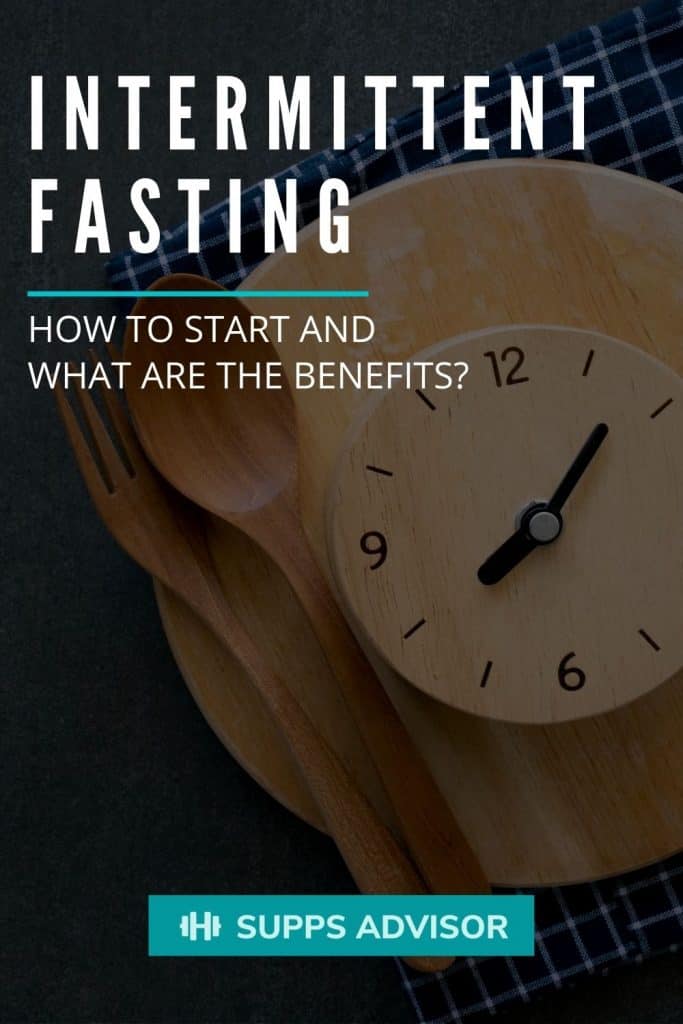
Krista Martinez is a freelance writer, SuppsAdvisor contributor, and former Certified Personal Trainer.
She’s currently a college student pursuing a bachelor’s degree in Liberal Arts.
When she’s not working, you can find Krista playing video games, reading, or working on her novel. You can also guarantee she’ll be listening to her favorite band, Starset. She loves to get active by going for a run or hitting the yoga mat. She hopes to finish her novel soon and see where life takes her!